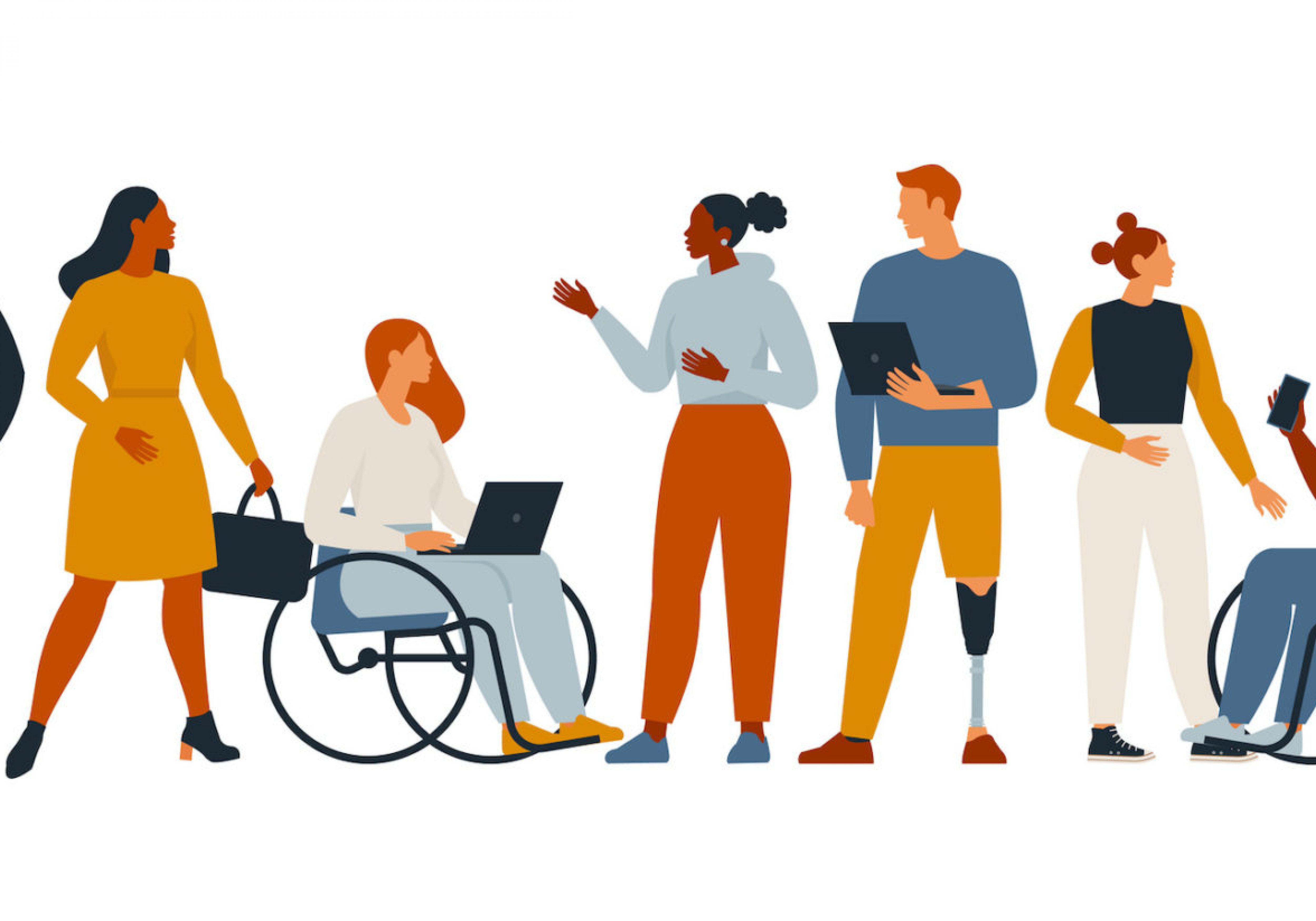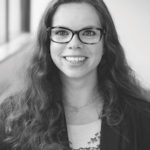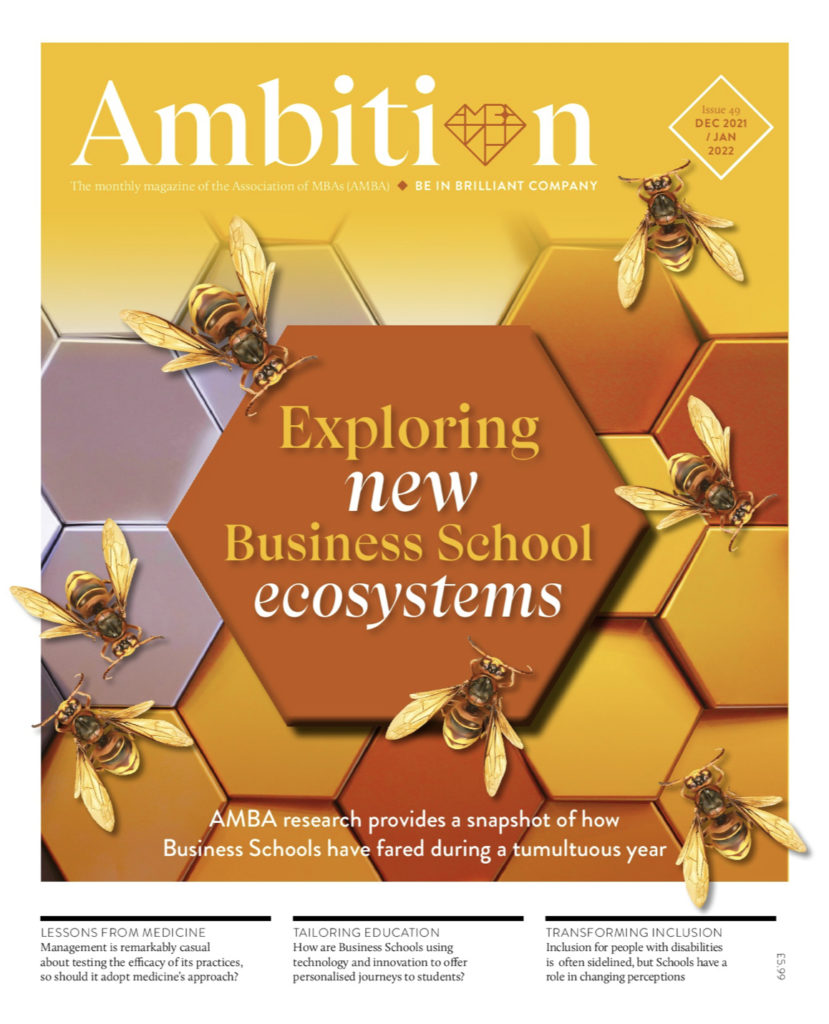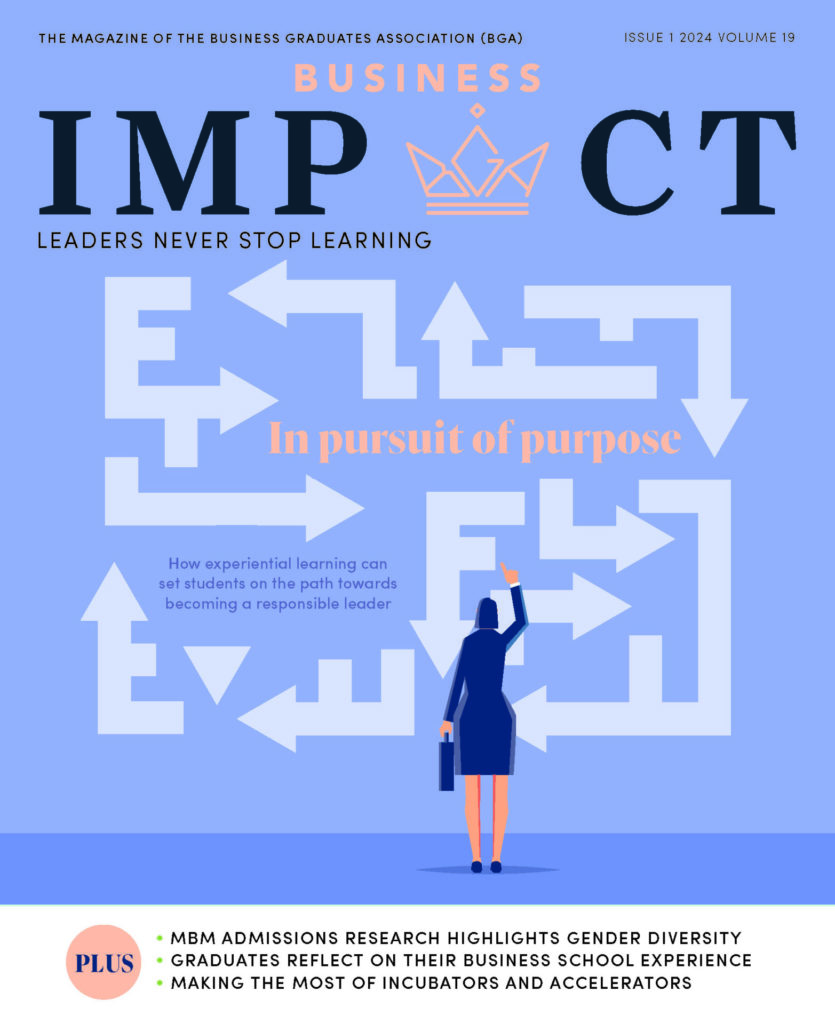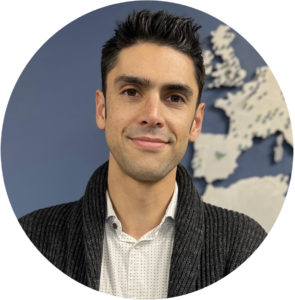Diversity and inclusion is usually part of a business school’s strategy, but policies for people with a disability are not always covered.
I believe the subject of disability inclusion at international business schools is of great importance and should be discussed more. It should become an integral part of an inclusive strategy for schools worldwide.
According to the Centers for Disease Control and Prevention, disability inclusion means understanding the relationship between the way people function and how they participate in society, and making sure everybody has the same opportunities to participate in every aspect of life to the best of their abilities and desires. One billion people, or 15% of the world’s population, experience some form of disability. One-fifth of the estimated global total – or between 110 million and 190 million people – experience significant disabilities.
Given that disabilities have such wide-reaching effects, it’s surely important for international business Schools to understand how disabilities can uniquely impact a person, and in turn how Schools can offer their help and support. This may range from looking at application processes to scrutinising the accessibility of buildings and curricula. It includes support not only for the students, but also for the academics and employees (such as me) who work within business schools.
Drawing on first-hand experience
I was born and raised in Bruekelen, and having stayed close to my roots, am now working at the business school there: Nyenrode Business University. Disability inclusion is a topic close to my heart as I was born with hereditary spastic paraparesis and am a wheelchair user. This is a rare condition, caused by the impaired functioning of descending nerves in the spinal cord. It manifests in increasing spasticity, weakness and stiffness in both legs which can make it difficult to walk. While it cannot be prevented, slowed or reversed, some of its symptoms can be managed to make day-to-day activities easier.
Prior to my role at Nyenrode Business University, I graduated as a teacher of Dutch sign language. However, I found it challenging to find a job in this sector and, after my studies, I worked for a year in customer services at the Dutch railways. I came across the opening at Nyenrode Business University with the help of an employment agency. I began working here in 2016, initially as programme co-ordinator at the Executive Education department, responsible for participant administration.
In April 2021, I became programme advisor. I enjoy helping people find a programme that suits their learning needs. My typical day includes contacting people who have shown interest in a certain course, or offering my help to those who might have queries about studying at Nyenrode Business University. Our executive education offers approximately 100 programmes and there’s always something (not least an email or 10) to keep me busy.
Trying to find a suitable programme for a student with a physical or learning disability is not always straightforward. For those who need extra support, there can be challenges to overcome, and I believe we need to support these students in their studies; for example, by adding more guidance and information about studying with a disability to our websites and making this information clearly visible on the homepage.
I would also like to see brochures featuring images of both disabled and able-bodied people. Little things like this can make someone with disabilities feel more included, showing that their needs will be catered for. Universities should take the time to consider how they present themselves, and their accessibility and acceptance of disabled people. This would make a big difference to students with disabilities applying for their programmes, giving them confidence that an institution is able to offer proper support.
Tips for business schools
My advice for schools includes making sure that application processes promote an inclusive environment. If your school is truly accessible to everyone, and is it possible for people with disabilities to study there, then make that clear. Upload details to your website and print it in your brochures. Enable students with disabilities to share their experiences with new students. Promote the fact that students with disabilities are welcome at your school.
Inclusion for people with disabilities can often take a back seat in the face of other issues or priorities. Disability can fall behind the curve when it comes to business school strategy, in comparison to other diversity strands such as gender, race and sexual orientation. These receive more attention, perhaps because there is greater awareness of them.
Many people within universities – students and academics alike – have had little experience of disability. Schools can make sure that policies and practices exist to make disability awareness more of a priority, and create an environment that is inclusive and accessible to all. In many cases, it is quite possible to study when you have a disability. However, I believe schools need think about, and help with, necessary adjustments.
There are various different strategies that international business schools can implement to encourage and develop a culture of inclusion. Preparation and awareness training is a great way to mitigate a lot of challenges. For example, making sure a building is accessible to those who use a wheelchair or require mobility aids makes it much easier and more comfortable for students with disabilities to move about. Installing equipment that supports students’ needs gives them full access to education.
At Nyenrode, accessibility is something that has been thought through and has really benefited me. I can move around easily in my wheelchair in the newer buildings here. In fact, I can do so in all but the castle, which was built hundreds of years ago. Our location in Amsterdam is also accessible to those with unique requirements.
Meanwhile, improving the way in which information is delivered to those with learning disabilities can make teaching, and the curriculum, more accessible and welcoming; for example, using assistive technology or audio formats to encourage multi-sensory learning and to cater to the different ways in which a student may engage with information. This might include providing readings and printouts in a larger font, using Braille worksheets, or something as simple as improving the lighting in classrooms to make for a more comfortable learning environment.
Simply facilitating a discussion between faculty and students on what, and how, improvements can be made can make a difference. This is something that happens at Nyenrode. Everyone is welcome here, as long as the study is suited to them. We discuss students’ needs, and together we will look for solutions. It doesn’t matter whether a student has a disability or not.
Giving people the opportunity and tools to talk about their disability creates an open and transparent environment at a business school, and this is a really important way of bringing disability inclusion to the forefront of a school’s agenda. Through facilitating discussions, schools enable students to offer their own ideas and bring first-hand experience to the table around how to promote change in terms of the school’s facilities, organisations, curricula or policies. We find the conversations with prospective students to be very important.
Bridging the gap between education and employment
Having addressed these practical issues, the next step for many business schools and universities to consider is bridging the gap between study and employment for those with disabilities. When looking at my own situation a number of years ago, I recall that the School I attended in Utrecht provided little in the way of help when I was considering life after university. As a result, I had trouble find an internship and was apprehensive about applying for jobs subsequently, expecting to face similar issues. Writing my résumé was also a challenge due to the lack of guidance.
For example, I struggled with whether or not to state on applications that I was in a wheelchair. I wasn’t sure whether to introduce the subject during the first few emails. However, fortunately, at my school, I spotted a flyer on the bulletin board advertising an employment agency for people with disabilities – named ‘Emma at Work’ – so I reached out to them.
Emma at Work is specifically designed to help young people with disabilities find employment. The agency started in 2006 from a project in the Emma Children’s Hospital (EKZ) Amsterdam UMC. After a year, it became an independent foundation, growing into a non-profit organisation. The agency is committed to closing the gap between young people who have a chronic illness or physical condition and the labour market.
The agency helps to train and develop young people aged between 15 and 30 through its programme GAP Track. The aim is to find each applicant a job at a company that suits them. It wants to help create a society in which everyone can participate. I don’t think I would have been able to find a job so quickly without Emma at Work’s help. Thankfully, I found the agency, but I would like to see more faculty members having conversations with students with disabilities and giving them the sort of advice I received from the agency – especially when it comes to finding accessible internships.
When considering the future of diversity and inclusion for all in business education, I am incredibly optimistic. The subject is becoming increasingly important, and I believe that more and more people are beginning to talk about disability. Already, there are many business schools providing disability co-ordinators, specific disability policies and pages of support on their websites. This is an important step in the right direction.
I hope that, through sharing my own experiences – alongside those of others in similar situations – I can provide a positive example of how it is possible to overcome potential challenges and that this will serve as a message of encouragement to others. International business schools have the power to change perceptions. They can help to puncture the idea that students with disabilities will struggle to study or to work. They can help to provide environments that are truly inclusive to everyone.

